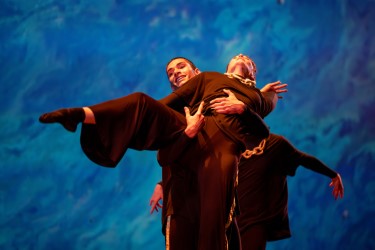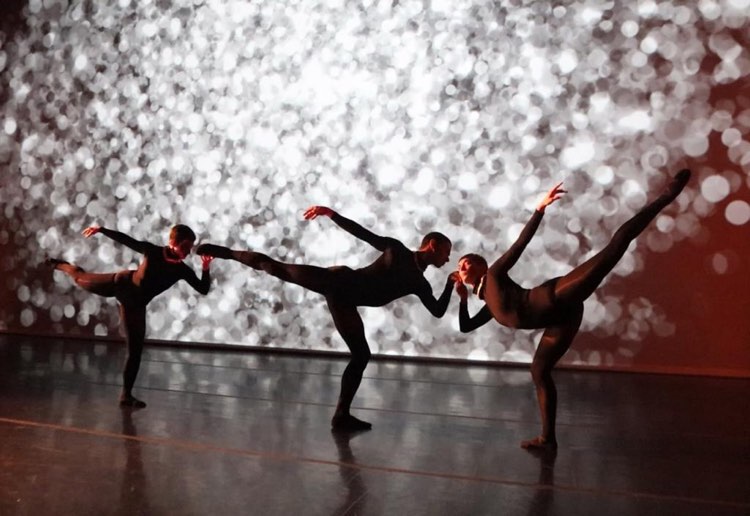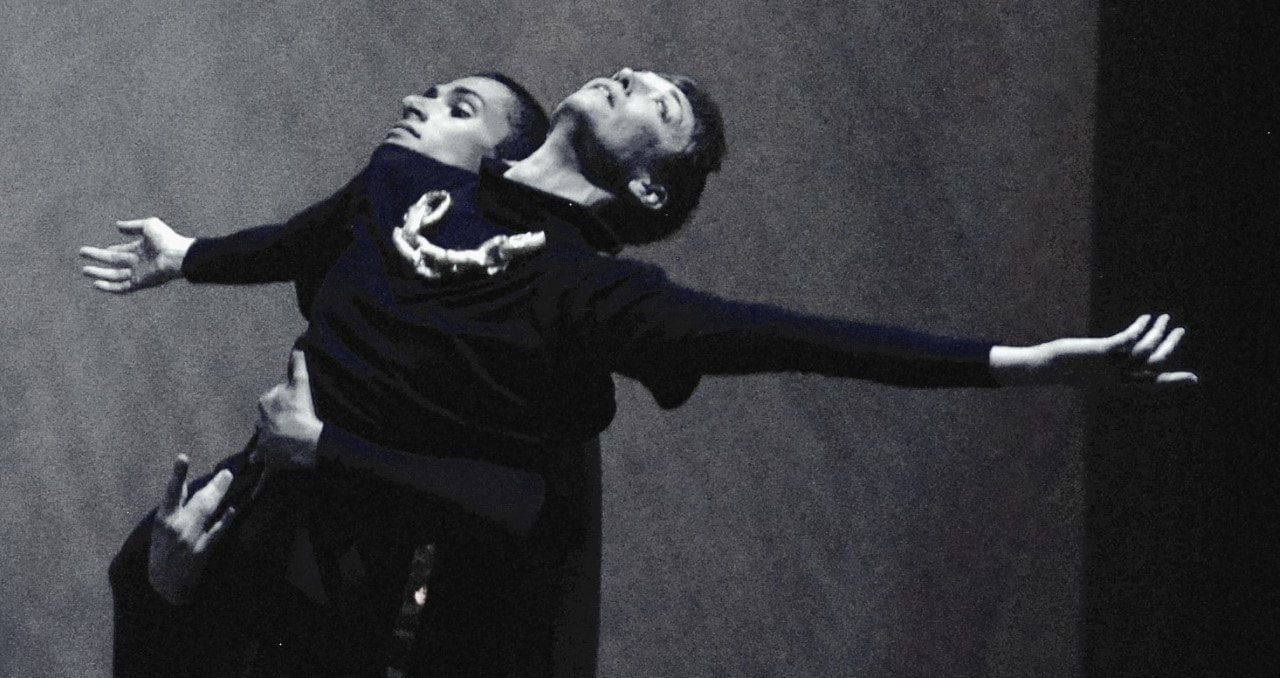
Bridget Baker Whole Project… “Meadow”
When I pulled up at the Miami Dade Auditorium, it jogged a memory of my performance with Neri Torres and IFE ILE Afro-Cuban Dance Company on the main stage over 20 years ago. I was already in a state of nostalgia. I veered around the building to the entrance of the Black Box Theater. I walked into the building immediately seeking out places for photo ops to capture my attendance and add visuals to my writing piece. I entered the performance space and scanned the audience, taking in demographics of the patrons: age, gender, ethnicity, and race, how were they dressed, what energy were they giving, and what languages were spoken? As I locate my seat, I begin to think about the elements that guide my writing: what did I see (Warren 2022), what am I reminded of, how am I entering the work, what are the themes, references, and politics, and what scholarship supports my thoughts?
I sat down and began deeply listening to the pre-show playlist (Nina Simone: “I Think It’s Going to Rain Today”; Bing Crosby: “Paradise”, De La Soul: “Tread Water”, The Impressions: “Keep on Pushing”, and Moby: “We Are All Made of Stars”) wondering about the information conveyed and the temperament and character of the artistic director Brigid Baker. This was an eclectic playlist which revealed the range of musical interests of the curator. I scan the stage and see a cluster of items; one is a tall phallic object draped in gold fabric. Standing next to it was a shorter pointing object also draped in gold (shimmery) fabric with a gold ball at the tip. Hanging from that was a greenish shinny and shimmering tassel like attachment. Laying at the foot of the shrine was possibly a fish fossil and several other unrecognizable items. I wondered where and how I would enter the work.
Baker states that “Meadow” begins to deal with the light, via the cosmos. It is named for the composer Thomas Meadowcroft. The first piece, 'ABRACADABRA' is a laying down of grids and lines, a grounding of light into the material. The second piece 'arbadacarba', takes those same geometries, and lines and humanizes them” (Baker 2023). ABRACADABRA focuses on the “still point” and 'arbadacarba' travels and moves while committed to the same movement structure; “There is an homage to hip hop in the costuming, because along the road of this ascension process, hip hop is the last created American dance form. There's the black and gold of disco, because time spent in the clubs was a gathering of love” (Baker 2023).
This is what I saw…
The piece began with a series of short films; the first featuring women constructing, pasting, and painting a globe. This was fascinating because I had never thought about this process before. We always see the final product without considering how this is done, which is very meticulous. The second film showcased a spider maneuvering through a beautifully spun web. The third film demonstrates how a gold plate is molded into a particular shape. Next, we see some kind of magic trick, and the last film is an image of the earth expanding into the universe. The soundscape is soft and soothing. Viewing the galaxy in this manner reminds me of my experience at the planetarium. The next image is a gold liquid sun.
‘ABRACADABRA’: Three dancers, Meredith Barton, Isaiah Gonzalez, Amy Trieger enter the space dressed in all black—black leotard, black tights, and black ballet slippers with a thick gold choker necklace. There is a sameness and androgynous element which neutralizes the eye. The sterility of the stage encourages the viewer to focus on particular elements. The dancers roll a gold painted medicine ball-like prop over each other as they travel across and down the stage performing the same pattern. It becomes meditational and ritualistic. The video images of vibrant color add depth and texture to the space. The dancers partner each other, cut, carve, and mold with their extremities, holding positions—arabesque and attitude. Their faces are stoic. The gaze is internal, “eschewing emotion, glamour, and…favoring a deadpan, paced delivery that aime[s] to render a dancer an impersonal agent: a “neutral ‘doer,’’’ (Morse 2008, 55). The dancers are fierce technicians performing leaps, extensions, assemblé’s, waltzes, and triplet phrases with beautifully shaped arms, “This striking ensemble is all the more eloquent because the choreography allows no transitions between successive movements. The dancer is fully involved in one movement and then immediately engages in the next” (Foster 1986, 13).
The sound scape transformed the space with screeching flute like sounds that built and regressed creating a soundtrack to the movie I created in my head. There was a feeling of familiarity that I was unable to pinpoint immediately. As the work progressed, I continued to develop my own narrative, I envisioned an other worldly experience. The dancers were traveling the galaxy similarly to the “Lost in Space” rerun episodes from the 1960’s that I watched as a kid in the 80’s. I wondered “What were they seeing?” and “What is their mission?”
During intermission, seconds before the dancers returned, a young man in the front row asked me what my perspective was and “What did I get from this?” I wondered about the purpose of his questioning. Was it for clarity for him or was he testing me. I explained to him that I was a dance writer and what that there were many things to take into consideration—the movement, costume, spatial design, setting, music and how all of these things connected or not and that question couldn’t be answered in 5-10 seconds. As an informed viewer and an educator, I questioned if my response was sufficient, useful, or helpful.
'arbadacarba’: The dancers returned in a change of costume—they added flowing black pants, a black tunic top, black ballet slippers and an even chunkier necklace. The second half began with a video of the galaxy, it was textured—the moon. The image switched to a lava-ish, orange/red picture. The music is light, the focus is brighter. There was a shift. The movements are more open and freer. There is more breath in the body and the couples move with more connection, engagement, and eye contact. They look out into the audience and include us in their intergalaxy journey.
Image 1: Justin Trieger
Image 2: Justin Trieger
Image 3: Justin Trieger
Image 4: Justin Trieger
Image 5: Justin Trieger
Image 6: Karime Arabia
Image 7: Karime Arabia
Image 8: Brigid Baker
Image 9: A’Keitha Carey
*Choreography, Set Installation, Costumes and Movies: Brigid Baker
*Sound Design and Video Projection Artist: Justin Trieger
*Building Assistant: Meredith Barton
Citations:
Foster, Susan. 1996. Reading Dancing: Bodies and Subjects in Contemporary American Dance. Los Angeles: University of California Press.
Morse, Meredith. 2018. “Minimalist” Dance, Social Critique: Revisiting Yvonne Rainer and Steve Paxton’s 1963 Word Words.”









 RSS Feed
RSS Feed